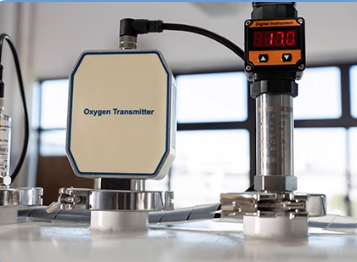
Argon Glove Box: Uses high-purity argon (Ar) as the protective gas.
Nitrogen Glove Box: Uses high-purity nitrogen (N₂) as the protective gas.
Argon (Ar):
Higher Inertness: Argon is a monatomic inert gas and is almost completely unreactive with other substances.
Higher Density: Argon is heavier than air, making it easier to maintain a stable protective atmosphere inside the glove box.
Higher Cost: Argon is generally more expensive than nitrogen.
Nitrogen (N₂):
Lower Inertness: Nitrogen is a diatomic molecule and is chemically stable, but it may react with highly reactive metals (e.g., lithium, sodium) under certain conditions.
Lower Density: Nitrogen is lighter than air, which may require higher gas flow rates to maintain a pure environment.
Lower Cost: Nitrogen is more affordable and widely available.
| Feature | Argon Glove Box | Nitrogen Glove Box |
|---|---|---|
| Inertness | Extremely high, almost no reactivity | High, but may not be stable with reactive metals |
| Gas Cost | Higher | Lower |
| Gas Density | Higher, easier to maintain stable atmosphere | Lower, may require higher flow rates |
| Suitable Applications | Highly sensitive materials | Materials sensitive to oxygen/moisture but with lower inertness requirements |
| Purification Efficiency | Typically higher, suitable for ultra-high purity environments | High, but may be slightly lower than argon |
Argon Glove Box:
Suitable for materials extremely sensitive to oxygen and moisture.
Commonly used for handling reactive metals like lithium, sodium, and potassium.
Ideal for high-precision research, such as solid-state batteries, nanomaterials, and organometallic compounds.
Best for applications requiring ultra-high-purity inert environments.
Nitrogen Glove Box:
Suitable for materials sensitive to oxygen and moisture but with lower inertness requirements.
Commonly used in general chemical synthesis, pharmaceuticals, and food packaging.
Ideal for cost-sensitive applications where ultra-high inertness is not critical.
Choose an Argon Glove Box when:
Handling highly reactive materials (e.g., lithium, sodium).
Experiments or production require extremely low oxygen and moisture levels (e.g., below 1 ppm).
Ultra-high-purity inert environments are necessary.
Choose a Nitrogen Glove Box when:
Handling materials sensitive to oxygen and moisture but with lower inertness requirements.
Budget constraints exist, and cost efficiency is important.
Applications do not require extremely high inertness.
Argon Glove Box:
Higher initial investment and operating costs, but ideal for high-precision and demanding applications.
Nitrogen Glove Box:
Lower initial investment and operating costs, suitable for budget-conscious or less demanding applications.
Argon Glove Box: Offers superior inertness and is ideal for highly sensitive materials, but at a higher cost.
Nitrogen Glove Box: More cost-effective and suitable for general applications, but may not be stable enough for highly reactive materials.
The choice between an argon glove box and a nitrogen glove box depends on the specific experimental requirements, material properties, and budget constraints. For high-precision research and specialized materials, an argon glove box is the better choice, while a nitrogen glove box is more economical for general applications.

This is a customized argon glove box. This argon storage capacity is relatively large, the barrel diameter is 1.2m, and there is a one meter by one meter pull-out platform built in, where welding work can be done. This argon vacuum chamber is equipped with a bipolar rotary vane vacuum pump and a Rhodes pump. The vacuum degree of the argon chamber can reach 50Pa. Since customers need to weld inside, the temperature will rise, so we have equipped a water cooler on the box body, which continuously circulates internally to reduce the temperature inside the box. The temperature range is within 40℃. On the left is the PLC control system, on which you can see the water oxygen value, pressure value, and temperature value in real time. If you need to customize the glove box and vacuum box, please contact us.








